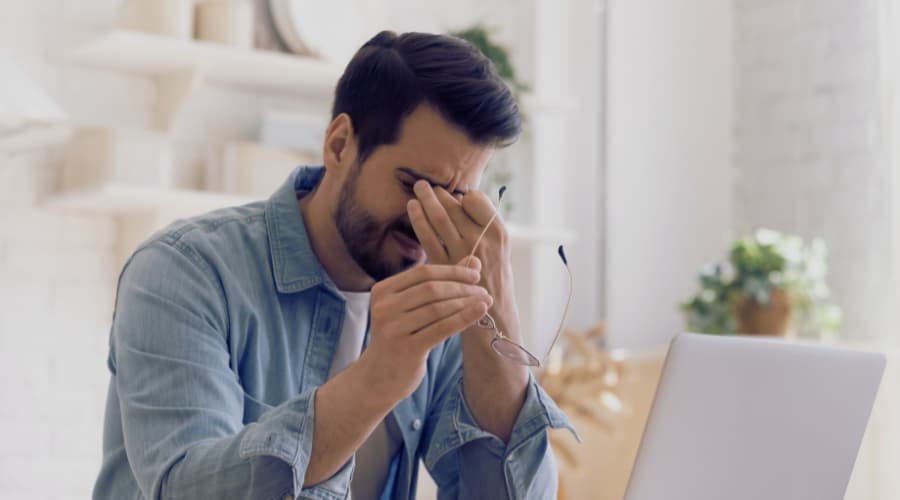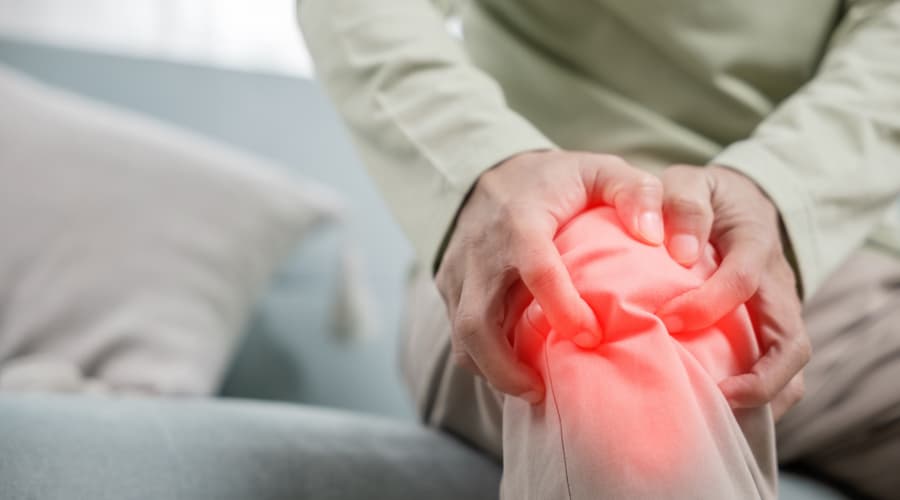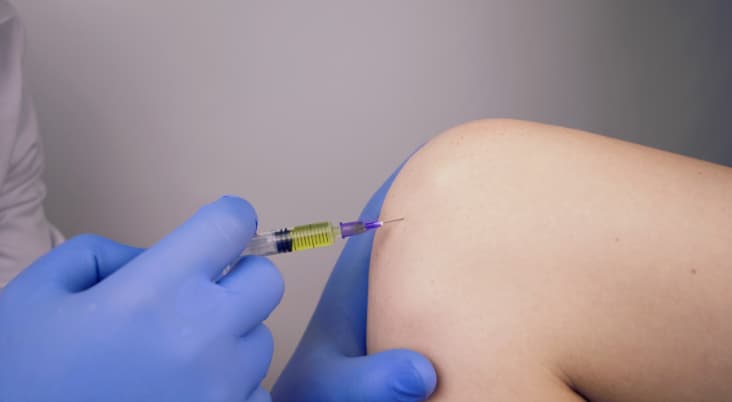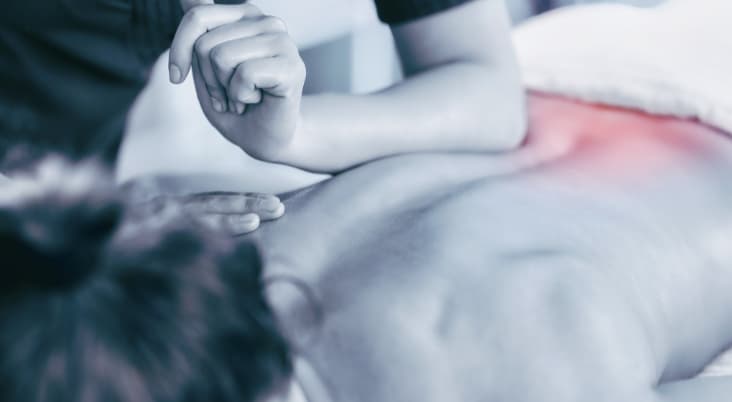Golfer’s elbow, medically known as medial epicondylitis, is a painful condition that affects the tendons and muscles connecting the forearm to the inner side of the elbow joint. Although the name suggests, it primarily affects golfers, this condition can impact anyone engaging in repetitive wrist and forearm motions. Golfer’s elbow can significantly impact one’s daily activities and overall quality of life, making understanding its causes, symptoms, and treatment options essential.
No specific UK statistics are available for the prevalence of medial epicondylitis or golfer’s elbow. However, it is worth noting that golfer’s elbow is less common than its counterpart, lateral epicondylitis (tennis elbow), which affects the outer side of the elbow. Tennis elbow is estimated to affect 1-3% of the general population.
Golfer’s elbow is often seen in individuals aged between 40 and 60 years, but it can affect people of all ages who engage in repetitive wrist and forearm motions. These activities include golf, tennis, weightlifting, and various manual labour jobs.
While several conventional treatments are available for golfer’s elbow, such as rest, ice, pain relievers, and physical therapy, some cases may require more advanced interventions. One such treatment option that has gained popularity in recent years is shockwave therapy. This non-invasive, innovative approach has shown promising results in treating golfer’s elbow, offering relief to those who have not responded well to other treatments.
Understanding Golfer’s Elbow
Golfer’s elbow, also known as medial epicondylitis, is a painful condition affecting the forearm muscles’ tendons to the elbow joint’s inner side. These tendons stabilise the wrist and allow various hand and wrist movements. Medial epicondylitis occurs when these tendons become inflamed and irritated due to overuse or strain, causing pain and discomfort around the elbow.
Anatomy of the elbow joint and affected tendons
The elbow joint is a complex structure consisting of three bones: the humerus (upper arm bone), the radius (forearm bone on the thumb side), and the ulna (forearm bone on the little finger side). The medial epicondyle, a bony prominence on the inner side of the elbow, serves as the attachment point for the tendons of the forearm flexor muscles. These muscles help bend the wrist and fingers; their tendons are collectively known as the common flexor tendon.
Golfer’s elbow primarily affects the common flexor tendon, specifically the flexor carpi radialis and palmaris longus tendons, which attach to the medial epicondyle of the humerus. Inflammation and micro-tears in these tendons can result in the pain and discomfort associated with medial epicondylitis.
Common causes and risk factors
1. Repetitive wrist and forearm motions
Activities involving repetitive wrist and forearm movements, such as gripping, twisting, or bending, can lead to overuse of the forearm muscles and tendons. This overuse may cause inflammation, micro-tears, and degeneration of the tendons, resulting in a golfer’s elbow.
2. Overuse and strain on the muscles and tendons
Performing activities that place excessive strain on the forearm muscles and tendons without allowing enough time for recovery can contribute to the development of a golfer’s elbow. Insufficient warm-up, poor technique, or a sudden increase in the intensity or frequency of activity can also lead to overuse and strain on the muscles and tendons.
3. Specific sports and occupations linked to golfer’s elbow
While a golfer’s elbow is commonly associated with golf, it can affect individuals involved in various sports and occupations that require repetitive wrist and forearm movements. These may include:
- Racket sports such as tennis, squash, and badminton
- Weightlifting and strength training
- Throwing sports like baseball and cricket
- Manual labour jobs, including carpentry, plumbing, and gardening
- Computer or desk-based work that involves prolonged typing or mouse use
Symptoms of Golfer’s Elbow
Pain and tenderness on the inner side of the elbow
One of the primary symptoms of a golfer’s elbow is pain and tenderness on the inner side of the elbow, where the forearm tendons attach to the medial epicondyle. In some cases, the pain can also extend along the inner side of the forearm. This pain may be exacerbated during activities that involve gripping, lifting, or bending the wrist.
Stiffness and limited range of motion
Individuals with golfer’s elbow may experience stiffness in the elbow joint, making it difficult to extend or bend the arm fully. This stiffness can be particularly noticeable in the morning or after periods of inactivity. A limited range of motion may also be present, making it challenging to perform daily tasks that involve wrist and hand movements.
Weakness in hands and wrists
As a golfer’s elbow affects the forearm muscles and tendons responsible for wrist and hand movements, those suffering from the condition may experience weakness in their hands and wrists. This can make it difficult to grip objects, perform delicate motor tasks, or carry out activities that require strength and agility.
Numbness and tingling in the fingers
Sometimes, a golfer’s elbow can cause numbness and tingling sensations in the fingers, particularly the ring and little fingers. This occurs due to compression or irritation of the ulnar nerve, which runs along the inner side of the elbow and extends down to the fingers.
When to seek medical help
If you are experiencing persistent pain, tenderness, or stiffness in your elbow that does not improve with rest and self-care measures, it is essential to seek medical advice. Early diagnosis and treatment can help prevent the condition from worsening and reduce the risk of long-term complications. Additionally, suppose you experience sudden, severe pain, significant swelling, or an inability to move your elbow. In that case, you should consult a healthcare professional promptly, as these may be signs of a more severe injury or condition.
Diagnosis and Evaluation
Diagnosing the golfer’s elbow typically begins with a thorough physical examination by a healthcare professional. During the examination, the clinician will assess the patient’s medical history and ask questions about the onset of symptoms, activities that may have contributed to the condition, and the severity of pain and discomfort. The healthcare professional will also evaluate the patient’s elbow for tenderness, swelling, and range of motion. They may perform specific tests, such as applying pressure to the affected tendons or asking the patient to flex their wrist against resistance, to help confirm the diagnosis.
Imaging techniques (X-rays, MRI, ultrasound)
While a physical examination is often sufficient to diagnose a golfer’s elbow, imaging techniques may be used to rule out other conditions or to assess the extent of the injury. Common imaging tests include:
- X-rays: These can help identify bone abnormalities, such as fractures or arthritis, that may be contributing to the patient’s symptoms.
- Magnetic Resonance Imaging (MRI): An MRI can provide detailed images of the soft tissues surrounding the elbow joint, including the tendons and muscles. This can help detect inflammation, tears, or degeneration in the affected tendons.
- Ultrasound: This imaging technique can visualise the tendons and muscles around the elbow in real-time, allowing your chiropractor to assess their structure and function. Ultrasound can also detect inflammation, tears, or calcifications in the tendons.
Differential diagnosis (other conditions with similar symptoms)
Several other conditions can present symptoms similar to a golfer’s elbow, making a differential diagnosis essential. Some of these conditions include:
- Lateral epicondylitis (tennis elbow): This condition affects the outer side of the elbow and involves the tendons of the forearm extensor muscles. Although the location of the pain is different, tennis elbow can cause similar symptoms to a golfer’s elbow.
- Cubital tunnel syndrome: Compression of the ulnar nerve as it passes through the cubital tunnel near the elbow can cause numbness, tingling, and pain in the forearm and fingers, which may be confused with golfer’s elbow.
- Elbow arthritis: Inflammation of the elbow joint can cause pain, stiffness, and limited range of motion, similar to a golfer’s elbow. Imaging tests can help differentiate between arthritis and medial epicondylitis.
- Elbow bursitis: Inflammation of the bursa, a fluid-filled sac that cushions the elbow joint, can cause pain and swelling at the tip of the elbow. While the location of the pain is distinct, elbow bursitis can be mistaken for a golfer’s elbow in some cases.
Conventional Treatment Options
One of the first steps in treating a golfer’s elbow is allowing the affected tendons and muscles to heal by resting and modifying activities that may exacerbate symptoms. Avoiding or limiting activities involving repetitive wrist and forearm movements, such as gripping or lifting is essential. Gradually reintroducing these activities as the symptoms can help prevent re-injury.
Ice and compression
Applying ice to the affected area can help reduce inflammation and alleviate pain. Ice packs should be wrapped in a towel or cloth to avoid direct contact with the skin and applied for 15-20 minutes several times daily. Compression bandages can also be used to help minimise swelling and provide support to the affected elbow.
Pain relievers and anti-inflammatory medications
Over-the-counter pain relievers, such as acetaminophen, and non-steroidal anti-inflammatory drugs (NSAIDs), like ibuprofen or naproxen, can help manage pain and inflammation associated with the golfer’s elbow. These medications should be used according to the package instructions or as directed by a healthcare professional.
Physical therapy
A qualified physical therapist can design a tailored rehabilitation program to help restore strength, flexibility, and function in the affected arm. Physical therapy may include stretching and strengthening exercises, manual therapy, and modalities such as ultrasound or electrical stimulation to help reduce pain and inflammation.
Bracing and splinting
Wearing a counterforce brace or an elbow strap can help alleviate pain and reduce the strain on the affected tendons during activities that involve the wrist and forearm. A splint may also be recommended to immobilise the affected arm temporarily, allowing the tendons and muscles to rest and heal.
Corticosteroid injections
Sometimes, when conservative treatment options do not provide adequate relief, a healthcare professional may recommend corticosteroid injections to reduce inflammation and pain. These injections should be cautiously administered, as repeated use can weaken the tendons and increase the risk of rupture. It is essential to discuss the potential benefits and risks of corticosteroid injections with a healthcare professional before proceeding with this treatment option.
Shockwave Therapy for Golfer’s Elbow
Shockwave therapy is an innovative, non-invasive treatment option for golfer’s elbow that has gained popularity in recent years. There are two main types of shockwave therapy used to treat a golfer’s elbow:
- Extracorporeal shockwave therapy (ESWT): ESWT uses high-energy acoustic waves generated by a device outside the body to target the affected tendons and stimulate the body’s natural healing response.
- Radial shockwave therapy (RSWT): RSWT employs lower-energy shockwaves that spread out radially from the treatment applicator, targeting a larger area around the affected tendons to promote healing and pain relief.
Mechanism of action
Shockwave therapy works through several mechanisms to help treat a golfer’s elbow:
- Stimulating the healing process: The acoustic waves delivered during shockwave therapy stimulate the body’s natural healing response by activating cellular processes, such as the release of growth factors and the recruitment of stem cells, which promote tissue repair and regeneration.
- Breaking down scar tissue: The mechanical force of the shockwaves helps break down and remodel scar tissue, which can contribute to the pain and limited range of motion associated with the golfer’s elbow.
- Increasing blood flow to the area: Shockwave therapy promotes the formation of new blood vessels, which increases blood flow to the affected tendons, delivering vital nutrients and oxygen to support the healing process.
Effectiveness and benefits
Success rates and clinical studies:
Several clinical studies have demonstrated the effectiveness of shockwave therapy in treating a golfer’s elbow, with success rates ranging from 60% to 80%. Patients experience significant improvement in pain, function, and quality of life following treatment.
Non-invasive alternative to surgery:
For those who have not responded to conventional treatments, shockwave therapy provides a non-invasive alternative to surgery, reducing the risks and complications associated with more invasive procedures.
Shockwave therapy generally requires a shorter recovery time than surgical interventions, allowing patients to return to daily activities and sports more quickly.
Procedure and what to expect
During a shockwave therapy session, a healthcare professional will apply a gel to the skin over the affected area to facilitate the transmission of the shockwaves. They will then use a handheld device to deliver the shockwaves to the targeted tendons. The procedure typically lasts 10-30 minutes and may be performed over several sessions, depending on the severity of the condition and the patient’s response to treatment.
Potential side effects and contraindications
Shockwave therapy is generally considered safe, but some patients may experience temporary side effects, such as redness, swelling, or pain at the treatment site. Serious complications are rare but may include tendon rupture, nerve damage, or infection. Some contraindications for shockwave therapy include pregnancy, a pacemaker, malignancies, or active infections in the treatment area. It is essential to discuss the potential risks and benefits of shockwave therapy with a healthcare professional before undergoing treatment.
Preventing Golfer’s Elbow
Using the correct technique during sports or work activities that involve repetitive wrist and forearm movements can help reduce the risk of developing a golfer’s elbow. It is essential to consult a coach, trainer, or healthcare professional to ensure that you are using the proper technique for your specific activity. Appropriate equipment, such as a well-fitted racket or an ergonomic keyboard, can help minimise strain on the forearm muscles and tendons.
Warming up and stretching
Before engaging in any activity involving repetitive wrist and forearm movements, performing a thorough warm-up, including dynamic stretching exercises, is crucial to prepare your muscles and tendons for action. Regular stretching exercises for your forearm flexor and extensor muscles can help maintain flexibility and reduce the risk of a golfer’s elbow.
Strengthening exercises
Regular strengthening exercises targeting the muscles of the forearm, wrist, and hand can help build resilience and reduce the risk of injury. Activities such as wrist curls, reverse wrist curls, and grip strengthening exercises can be easily incorporated into your routine. It is essential to consult a healthcare professional, such as a physiotherapist or a certified fitness instructor, to design a tailored strengthening program to suit your needs.
Recognizing early warning signs
It is vital to be aware of the early warning signs of the golfer’s elbow, such as pain, tenderness, or stiffness in the inner elbow, and seek timely treatment to prevent the condition from worsening. Early intervention can help prevent long-term complications and ensure a faster recovery. If you experience any symptoms of a golfer’s elbow, it is essential to rest, modify your activities, and consult a healthcare professional for further evaluation and management.
Recap
Golfer’s elbow, or medial epicondylitis, is a common condition affecting the tendons and muscles of the inner elbow, often caused by repetitive wrist and forearm motions, overuse, and strain. Symptoms can include pain and tenderness on the inner side of the elbow, stiffness, limited range of motion, weakness in the hands and wrists, and numbness and tingling in the fingers. Conventional treatment options include rest, activity modification, ice and compression, pain relievers and anti-inflammatory medications, physical therapy, bracing, and corticosteroid injections.
Shockwave therapy, including extracorporeal shockwave therapy (ESWT) and radial shockwave therapy (RSWT), is an innovative, non-invasive treatment option for golfer’s elbow. It works by stimulating the body’s natural healing process, breaking down scar tissue, and increasing blood flow to the affected area. Shockwave therapy offers several benefits, including high success rates, reduced recovery time, and is a non-invasive alternative to surgery.
Practising proper technique, using appropriate equipment, warming up and stretching before activities, and performing regular strengthening exercises can all help reduce the risk of injury. Recognising the early warning signs of a golfer’s elbow and seeking timely treatment can also ensure a faster recovery and prevent long-term complications.
Related Articles
- Are You a Golfer? Here’s How to Maintain a Healthy Back
- Shockwave Therapy as an Aid to Physical Rehabilitation
- Types of Tendonitis that Shockwave Therapy Can Treat
- Does Shockwave Therapy Really Work for Calcific Tendonitis?
- Muscle Pain and Can Chiropractic Help




























